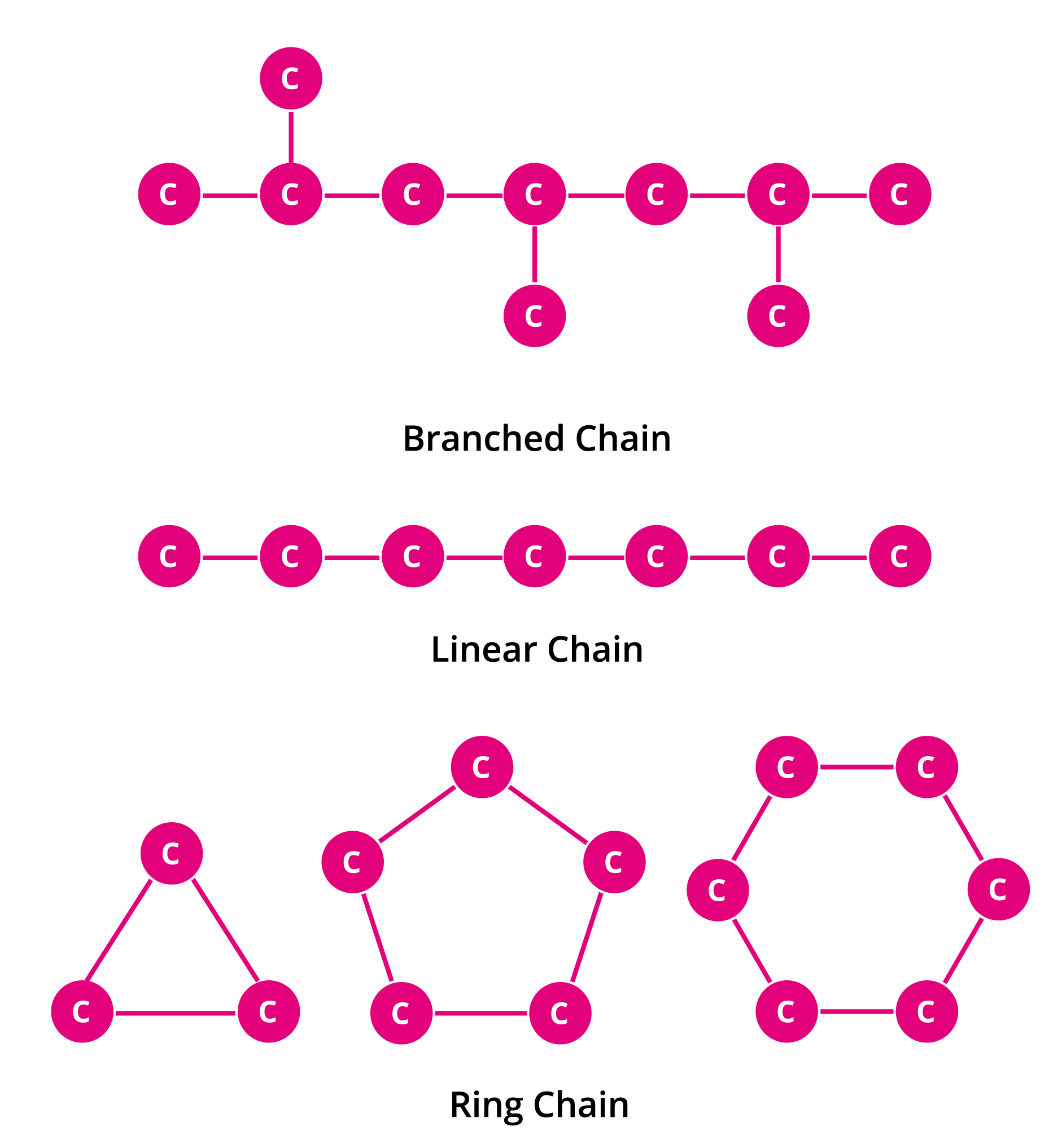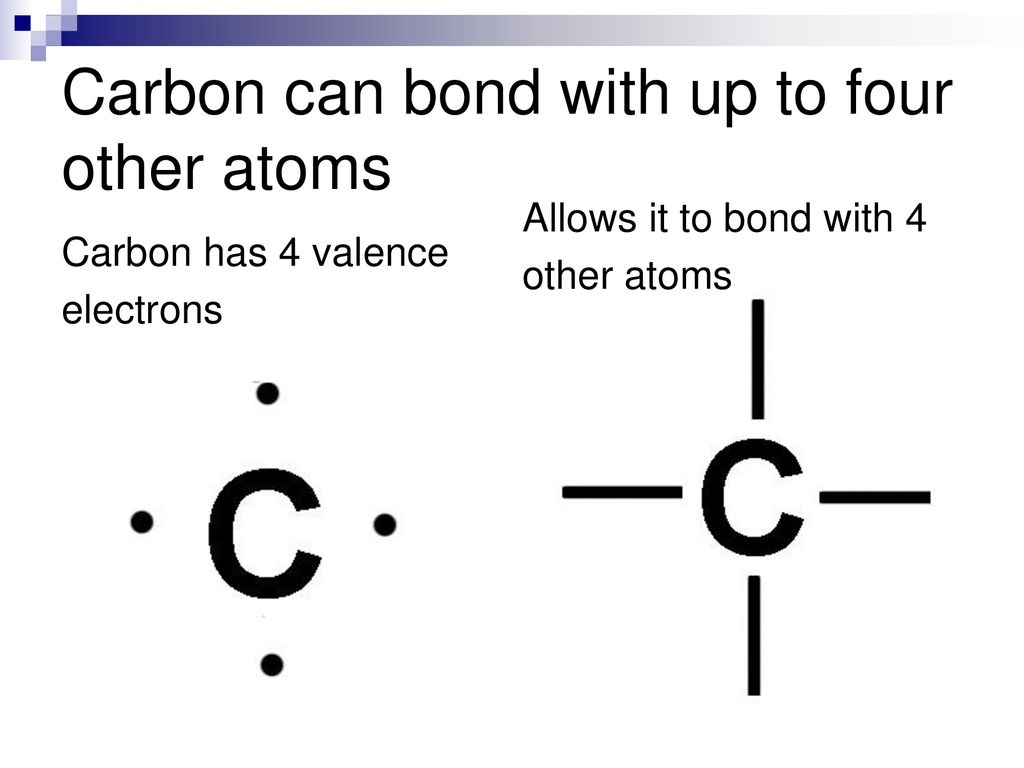What Are The 4 Types Of Bonds Carbon Can Form
What Are The 4 Types Of Bonds Carbon Can Form - In a single bond, two carbon atoms share one pair of electrons. Carbon can form four types of chemical bonds: The simplest carbon molecule is methane (ch 4), depicted here. Carbon binds to oxygen, hydrogen, and nitrogen covalently to form the many molecules important for cellular function. Carbon can form single, double, or even triple bonds with other carbon atoms. Carbon can form four single bonds, where it shares one electron. One double and two single bonds. Carbon can form four covalent bonds to create an organic molecule. What are the 4 types of carbon bonds?
Carbon can form single, double, or even triple bonds with other carbon atoms. In a single bond, two carbon atoms share one pair of electrons. One double and two single bonds. Carbon can form four types of chemical bonds: The simplest carbon molecule is methane (ch 4), depicted here. Carbon can form four covalent bonds to create an organic molecule. What are the 4 types of carbon bonds? Carbon can form four single bonds, where it shares one electron. Carbon binds to oxygen, hydrogen, and nitrogen covalently to form the many molecules important for cellular function.
Carbon can form single, double, or even triple bonds with other carbon atoms. Carbon can form four types of chemical bonds: The simplest carbon molecule is methane (ch 4), depicted here. One double and two single bonds. Carbon can form four single bonds, where it shares one electron. Carbon can form four covalent bonds to create an organic molecule. What are the 4 types of carbon bonds? Carbon binds to oxygen, hydrogen, and nitrogen covalently to form the many molecules important for cellular function. In a single bond, two carbon atoms share one pair of electrons.
PPT Organic Chemistry Functional Groups PowerPoint Presentation
Carbon binds to oxygen, hydrogen, and nitrogen covalently to form the many molecules important for cellular function. What are the 4 types of carbon bonds? Carbon can form four covalent bonds to create an organic molecule. Carbon can form four types of chemical bonds: One double and two single bonds.
[Class 10 Chemistry] Bonding in Carbon Atoms Covalent Bonds
Carbon binds to oxygen, hydrogen, and nitrogen covalently to form the many molecules important for cellular function. Carbon can form single, double, or even triple bonds with other carbon atoms. Carbon can form four single bonds, where it shares one electron. The simplest carbon molecule is methane (ch 4), depicted here. Carbon can form four covalent bonds to create an.
Special features of Carbon — lesson. Science State Board, Class 9.
One double and two single bonds. The simplest carbon molecule is methane (ch 4), depicted here. Carbon can form four single bonds, where it shares one electron. Carbon binds to oxygen, hydrogen, and nitrogen covalently to form the many molecules important for cellular function. Carbon can form single, double, or even triple bonds with other carbon atoms.
Why carbon does not form four bonds with another carbon?/chemical
Carbon can form single, double, or even triple bonds with other carbon atoms. Carbon binds to oxygen, hydrogen, and nitrogen covalently to form the many molecules important for cellular function. One double and two single bonds. Carbon can form four types of chemical bonds: Carbon can form four single bonds, where it shares one electron.
The 4 Types of Bonds Carbon Can Form Video & Lesson Transcript
What are the 4 types of carbon bonds? The simplest carbon molecule is methane (ch 4), depicted here. In a single bond, two carbon atoms share one pair of electrons. Carbon can form four types of chemical bonds: Carbon can form four covalent bonds to create an organic molecule.
What Are The Four Types Of Bonds Carbon Can Form Design Talk
One double and two single bonds. Carbon can form four single bonds, where it shares one electron. In a single bond, two carbon atoms share one pair of electrons. Carbon binds to oxygen, hydrogen, and nitrogen covalently to form the many molecules important for cellular function. The simplest carbon molecule is methane (ch 4), depicted here.
[Class 10 Chemistry] Bonding in Carbon Atoms Covalent Bonds
Carbon can form four types of chemical bonds: The simplest carbon molecule is methane (ch 4), depicted here. In a single bond, two carbon atoms share one pair of electrons. Carbon can form single, double, or even triple bonds with other carbon atoms. What are the 4 types of carbon bonds?
Carbon Compounds and Examples
Carbon can form four types of chemical bonds: Carbon binds to oxygen, hydrogen, and nitrogen covalently to form the many molecules important for cellular function. In a single bond, two carbon atoms share one pair of electrons. Carbon can form single, double, or even triple bonds with other carbon atoms. Carbon can form four covalent bonds to create an organic.
Double Covalent Bond Covalent Bonding Quiz ProProfs Quiz, The
The simplest carbon molecule is methane (ch 4), depicted here. In a single bond, two carbon atoms share one pair of electrons. Carbon can form single, double, or even triple bonds with other carbon atoms. Carbon can form four types of chemical bonds: Carbon can form four single bonds, where it shares one electron.
Organic Molecules The “stuff” of life. ppt download
What are the 4 types of carbon bonds? The simplest carbon molecule is methane (ch 4), depicted here. Carbon can form four single bonds, where it shares one electron. Carbon can form four covalent bonds to create an organic molecule. In a single bond, two carbon atoms share one pair of electrons.
The Simplest Carbon Molecule Is Methane (Ch 4), Depicted Here.
What are the 4 types of carbon bonds? One double and two single bonds. Carbon can form single, double, or even triple bonds with other carbon atoms. Carbon can form four covalent bonds to create an organic molecule.
Carbon Can Form Four Single Bonds, Where It Shares One Electron.
Carbon binds to oxygen, hydrogen, and nitrogen covalently to form the many molecules important for cellular function. In a single bond, two carbon atoms share one pair of electrons. Carbon can form four types of chemical bonds:

![[Class 10 Chemistry] Bonding in Carbon Atoms Covalent Bonds](https://d1avenlh0i1xmr.cloudfront.net/medium/65382287-b5ac-4ea6-8a57-1f5a107b172c/a-carbon-atom---teachoo.jpg)




![[Class 10 Chemistry] Bonding in Carbon Atoms Covalent Bonds](https://d1avenlh0i1xmr.cloudfront.net/large/6f2704db-da18-4198-8dd5-4dc81ae3ac22/carbon-sharing-electrons-with-hydrogen---teachoo.jpg)


